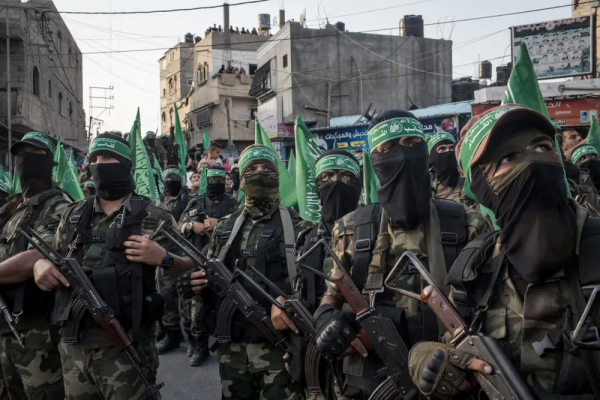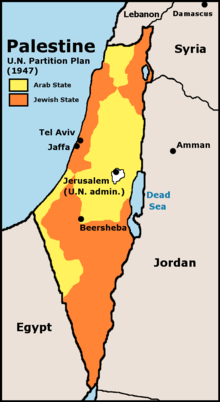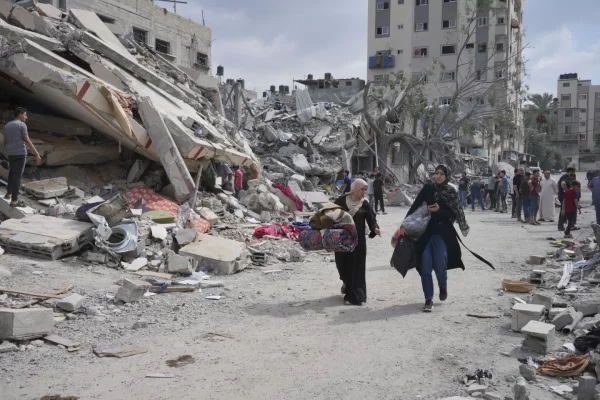Israeli-Palestinian War: Religious and Historical Context
By Kinison (Kini) Wessling
The Woodlands College Park
Download the PDF: Israel-Palestine Conflict-Newspaper K Wessling
As coverage of conflict between Israeli and Palestinian forces intensifies, extremism has become the center of attention following Israel’s declaration of war against Palestinian Hamas (an acronym for Harakat al-Muqawama al-Islamiya, translating to Islamic Resistance Movement). While Zionists and Hamas members represent the violent sector of the Israeli-Palestinian conflict, these militant organizations misconstrue the decades of religious, territorial, and historical factors directly affecting innocent Muslim and Jewish citizens.

Christianity, Judaism, and Islam are called Abrahamic religions, as they all credit Abraham as their first prophet and worship a single God (monotheism). The Middle East harbors what Abrahamic religions call the “Holy Land,” including Jerusalem, Bethlehem, the West Bank, and Gaza. Israel (primarily Jewish) and Palestine (primarily Muslim) claim this region as members of separate Abrahamic religions, inciting decades of treacherous territorial battles over religious ownership of these lands for worship and sacred practices. Equal ownership of these lands for respective religious uses has proven impossible, as seen through the intensity of anti-Islamic Zionist campaigns in Israeli territories and the overt violence of Palestinian Hamas militias. Hamas terrorists, who intentionally brutalize Israeli citizens as a form of retaliation against the territorial oppression of Palestinians by the Israeli government and military, represent the current target of Israeli forces. While religious differences have played a pivotal role in the development of conflict between Israel and Palestine and the gradual erasure of Palestinian presence in what is now Israeli territory, it is not the only factor to blame for the sudden brutality between Hamas and the Israeli government.
Historically, the presence of Palestinians predated the development of “Israel” as a recognized nation. Palestine, an existing nation ruled by the Ottoman Empire, existed independently into the late 19th century until Zionists (individuals who believed in the development and protection of a Jewish state in what is now Israel) sought to establish a homeland for Jewish people within Palestine, endorsed by the Balfour Declaration of 1917, in which the British government reinforced Zionist ideology and prompted the influx of Jewish settlers into Palestinian territory. After the Holocaust (1941-1945), pressure surged for the establishment of a Jewish state in Palestine as a haven for those who survived religious persecution at the hands of Nazi forces, leading to the birth of Israel as an independent nation in 1948. The invasion and wrongful claim of Palestinian territory misplaced thousands of Palestinian civilians, drastically increasing the population of Palestinian refugees in what was once their home. The forced removal of religious groups for the purpose of achieving religious homogeneity in an area, known as ethnic cleansing, has nearly eradicated Palestinian (and consequently, Islamic) presence in what is now considered Israel. The authoritative power of Israel ensured that Palestinian victimization would be overshadowed by the victory of the establishment of a sovereign Jewish nation.

The rise of Arab nationalism (in allegiance with Ottoman forces) and Zionism in response to Palestinian erasure and Israeli dominance can be traced as a direct root of the present war between Hamas and Israeli military forces. Anger regarding territorial disputes translated to animosity towards rivaling ethnic and religious groups, associating Islam with Palestinians and Judaism with Israelis. While the Balfour Declaration of 1917 intended to provide a haven for Jewish populations without disturbing pre-existing non-Jewish communities, the Jewish occupation of Palestine quickly converted a once-Islamic nation to a designated region for Jewish presence. For the initial purpose of building a haven against anti-semitism, Israel provided a safe, independent nation for religious pride and protection from rampant discrimination against the Jewish faith (at the expense of the Islamic way of life). This development necessitated the concealed expulsion of the majority of Palestinian and Islamic citizens in “Israel,” enabled by minimal (if any) public coverage of this abhorrent display of ethnic cleansing. Due to this concealment, the present conflict between Hamas and Israel has been effectively manipulated to demonize the Palestinian populace through the showcase of Islamic extremism and terrifying terrorist attacks committed on Israeli/Jewish civilians by Hamas militias. While the senseless, brutal violence and slaughter of innocent Israelis at the hands of Hamas forces cannot be discredited as a tragedy, it is crucial to recognize the silent, gradual genocide of Palestinians since the mid-20th century. According to the United Nations Office for the Coordination of Humanitarian Affairs, there have been 6,407 Palestinian fatalities at the hands of Israeli forces since 2008; and 5,360 of these deaths occurred on the Gaza Strip, one of the few pieces of land where Palestinians have maintained residency following their expulsion from Israeli-claimed land. In the present day, Gaza remains highly disputed, as Israel continues to attempt to seize the land from Palestinians in an effort to fully eradicate Palestinian presence from Israeli perimeters. Undoubtedly proving the destructive efforts of the Israeli military, 3,212 of the aforementioned casualties were a result of air-launched explosive weapons. Additionally, on October 13, 2023, Israeli forces dropped notes from aircrafts warning citizens in Gaza to evacuate before airstrikes commence, killing innocent Palestinians. While this warning may seem to protect the safety of Gaza’s citizens, the border of Gaza was recently closed, consequently trapping thousands of Palestinians in an active warzone. The continuous erasure of Palestinian civilians from established Palestinian territories further reinforces that the total acquisition of Palestinian land for the expansion of Israel’s boundaries is the central objective of the Israeli government.

Stemming from religious polarity and territorial disputes, the ongoing conflict between Israel and Palestine may seem foreign or unreasonable through the lens of American religious freedom, as U.S. land is divided into states and political jurisdictions, rather than the grouping of populations based on their religious sector. The America we live in today (in which we are free to practice our respective religions) was achieved through similar means as the current Israeli-Palestinian conflict, seen through the colonization and removal of Native Americans from “American” land since the dawn of North American exploration. As Palestinians are experiencing today, thousands of Native Americans were expelled from the territory which was once their home for the purpose of settlers’ prosperity. This comparison, while centuries apart, illustrates the terror of being forcefully removed from your land on the basis of another entity’s entitlement, whether it be the Trail of Tears in America or the present-day cleansing of Palestineans from their homelands. The concurrent theme between the Israeli-Palestinian War, Native American erasure, and war as a whole is the inherent lack of empathy and compassion for our fellow citizens. To understand one’s religion, perspective, or circumstance births a plethora of possibilities for reconciliation and unity, while the continuance of brutality, discrimination, and violence only works to further the divide between us as humans, the quality which all races and religions share.
Download the PDF:
Israel-Palestine Conflict-Newspaper K Wessling
Works Cited
Batrawy, Aya and Becky Sullivan. “Gazans flee their homes after an Israeli evacuation order but have few places to go.” NPR, 13 Oct. 2023. Accessed 13 Oct. 2023, https://www.npr.org/2023/10/13/1205672587/israel-warns-evacuate-northern-gaza.
BBC News Services. “Israel Gaza war: History of the conflict explained.” British Broadcasting Corporation. Updated 17 Oct. 2023. Accessed 14 Oct. 2023, https://www.bbc.com/news/newsbeat-44124396.
Houston Public Media. “Three Religions: One God.” Public Broadcasting Service. Accessed 12 Oct. 2023, https://www.pbs.org/wgbh/globalconnections/mideast/themes/religion/index.html#:~:text=Abraham%20is%20traditionally%20considered%20to,also%20called%20the%20Abrahamic%20religions.
United Nations. “History of the Question of Palestine.” United Nations. Accessed 13 Oct. 2023, https://www.un.org/unispal/history/.
United Nations Office for the Coordination of Humanitarian Affairs. “Data On Casualties.” United Nations, 9 Sep. 2023. Accessed 13 Oct. 2023, https://www.ochaopt.org/data/casualties.




